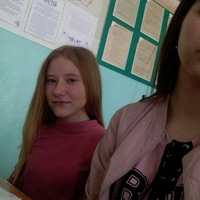
Как определить вил глагола ???
 0
0
 0
0
Ответы на вопрос
 Внимание! Ответы на вопросы дают живые люди. Они могут содержать ошибочную информацию, заблуждения, а также ответы могут быть сгенерированы нейросетями. Будьте внимательны. Если вы уверены, что ответ неверный, нажмите кнопку "Пожаловаться" под ответом.
Внимание! Ответы на вопросы дают живые люди. Они могут содержать ошибочную информацию, заблуждения, а также ответы могут быть сгенерированы нейросетями. Будьте внимательны. Если вы уверены, что ответ неверный, нажмите кнопку "Пожаловаться" под ответом.

Например:
я ответила (что сделала?) - совершенный вид
он пишет (что делает?) - несовершенный вид
 0
0
 0
0

Identifying the Object of a Verb
To identify the object of a verb, you can follow these guidelines:
1. Direct Object: - A direct object is the noun or pronoun that receives the action of the verb directly. - It answers the question "what" or "whom" after the verb. - Example: "She bought a new car." (What did she buy? - a new car)
Source: 2. Indirect Object: - An indirect object is the noun or pronoun that receives the direct object. - It answers the question "to whom" or "for whom" after the verb. - Example: "He gave her a present." (To whom did he give? - her)
Source: 3. Object of a Preposition: - When a verb is followed by a preposition, the noun or pronoun after the preposition is the object of the preposition. - Example: "She is talking about her vacation." (About what is she talking? - her vacation)
Source: 4. Reflexive Object: - A reflexive object refers to the same person or thing as the subject of the verb. - It is formed by adding "-self" or "-selves" to a personal pronoun. - Example: "He cut himself while shaving." (Whom did he cut? - himself)
Source: 5. Object Complement: - An object complement is a word or group of words that modifies or refers to the direct object. - It provides more information about the direct object. - Example: "They elected him president." (What did they elect him? - president)
Source: 6. Cognate Object: - A cognate object is a noun that is the same as the verb. - It emphasizes the action of the verb. - Example: "She sang a song." (What did she sing? - a song)
Source: 7. Object of a Gerund: - A gerund is a verb form ending in "-ing" that functions as a noun. - The noun or pronoun that follows a gerund is the object of the gerund. - Example: "She enjoys swimming." (What does she enjoy? - swimming)
Source: 8. Object of an Infinitive: - An infinitive is the base form of a verb with "to" (e.g., to run, to eat). - The noun or pronoun that follows an infinitive is the object of the infinitive. - Example: "She wants to learn Spanish." (What does she want? - to learn Spanish)
Source: 9. Object in Present Simple Tense: - In the present simple tense, the object follows the verb and can be a noun or pronoun. - Example: "Do they study English?" (What do they study? - English)
Source: Remember, identifying the object of a verb is essential for understanding the structure and meaning of sentences.
 0
0
 0
0
Топ вопросов за вчера в категории Русский язык
Последние заданные вопросы в категории Русский язык






-
Математика
-
Литература
-
Алгебра
-
Русский язык
-
Геометрия
-
Английский язык
-
Химия
-
Физика
-
Биология
-
Другие предметы
-
История
-
Обществознание
-
Окружающий мир
-
География
-
Українська мова
-
Информатика
-
Українська література
-
Қазақ тiлi
-
Экономика
-
Музыка
-
Право
-
Беларуская мова
-
Французский язык
-
Немецкий язык
-
МХК
-
ОБЖ
-
Психология
-
Физкультура и спорт
-
Астрономия
-
Кыргыз тили
-
Оʻzbek tili













